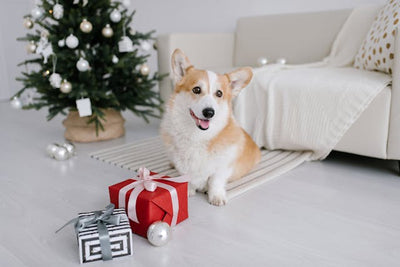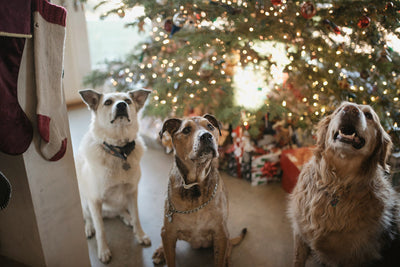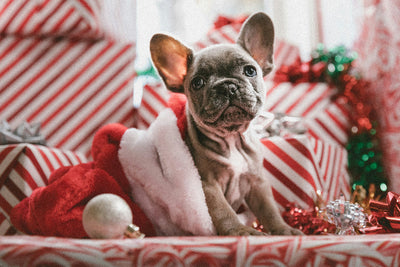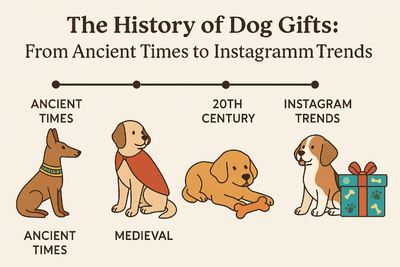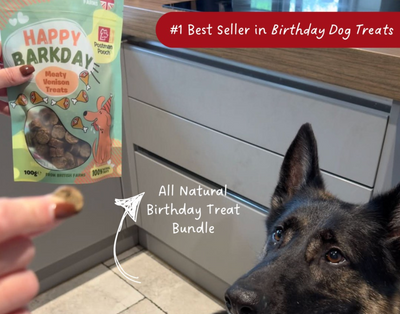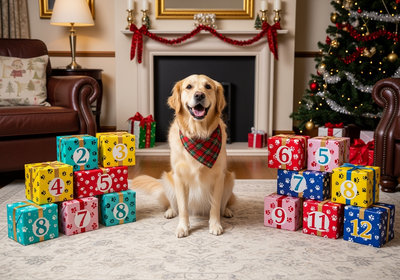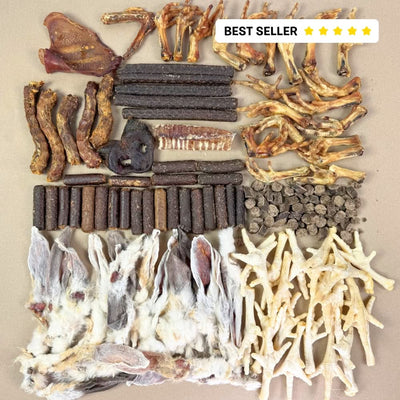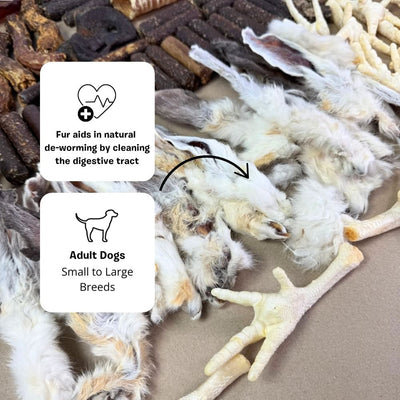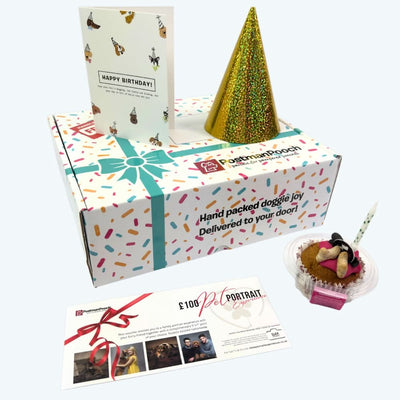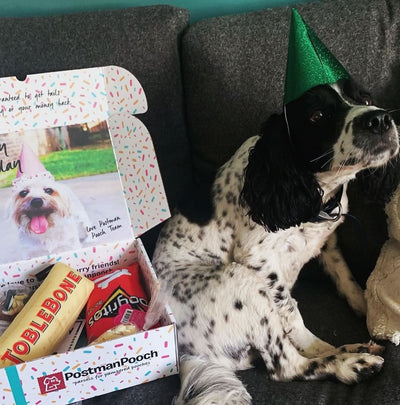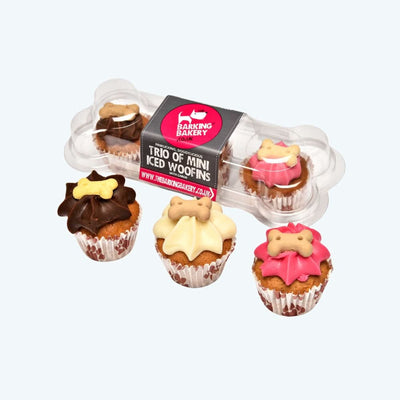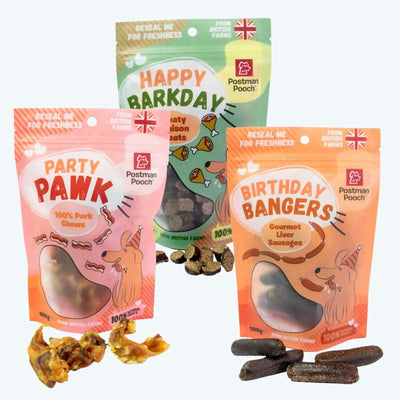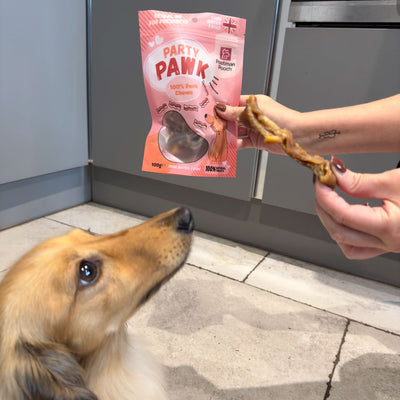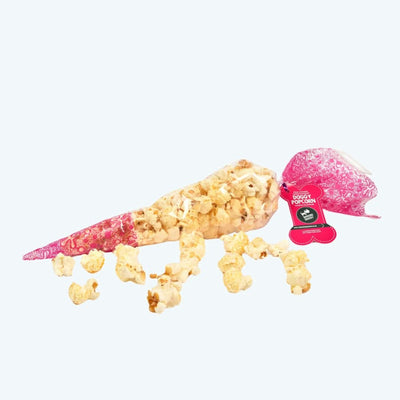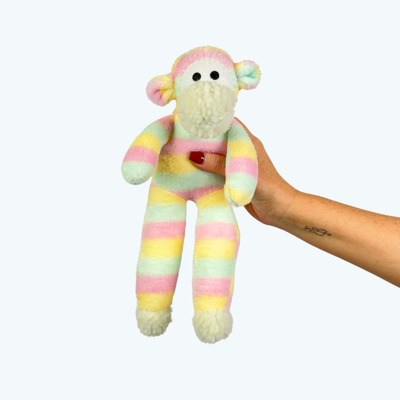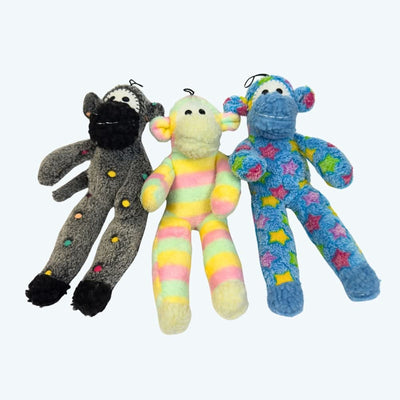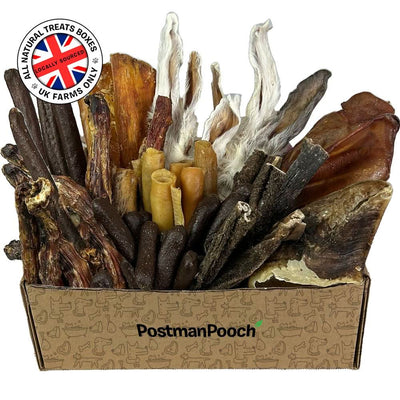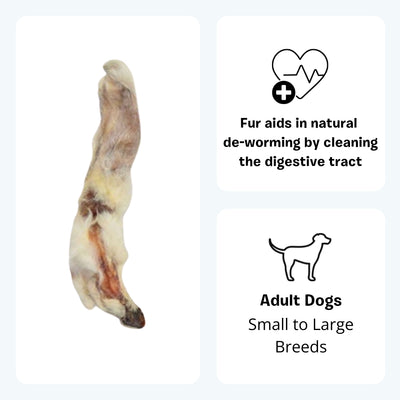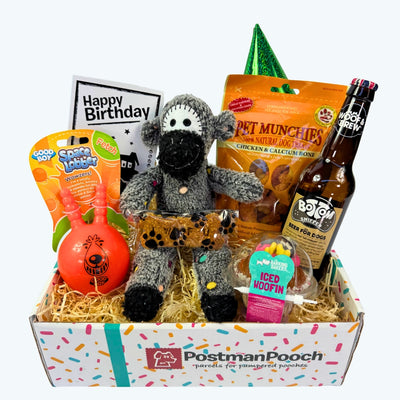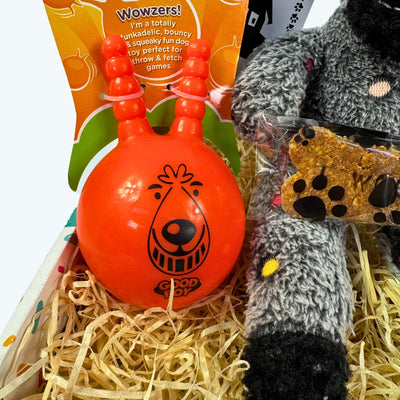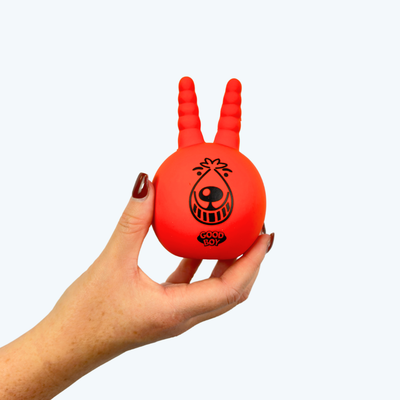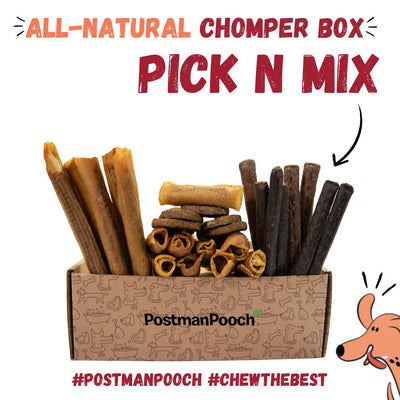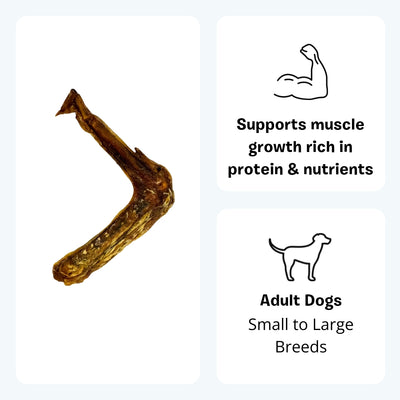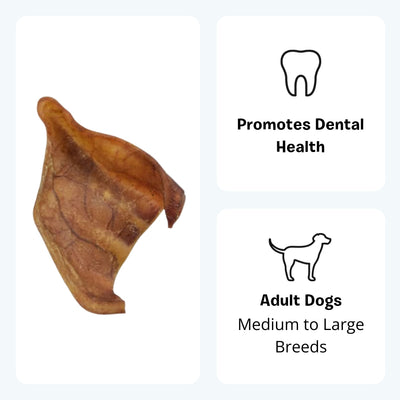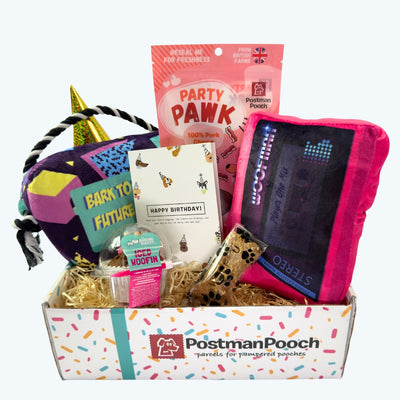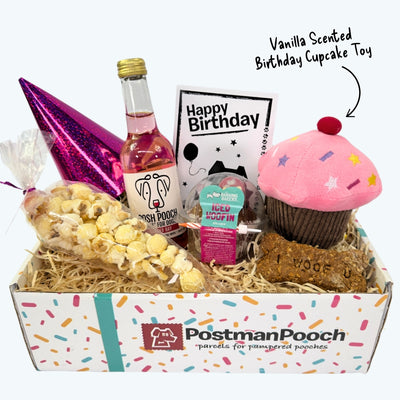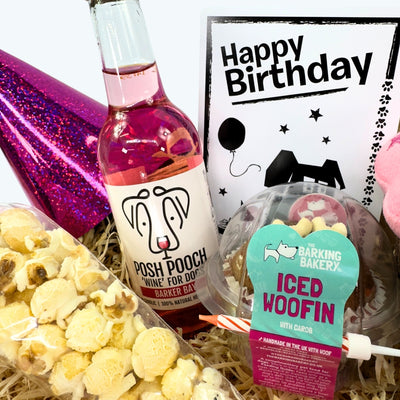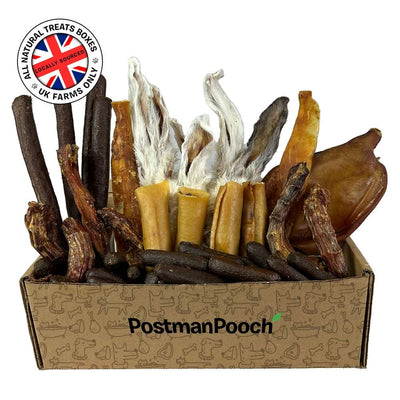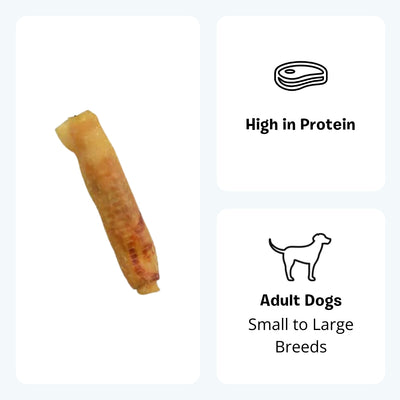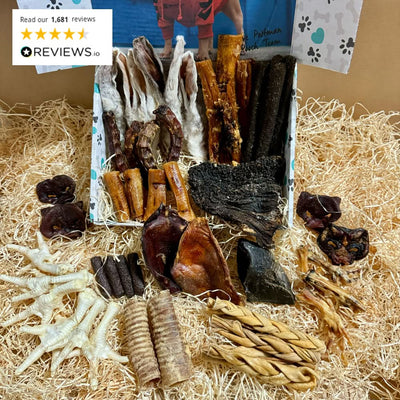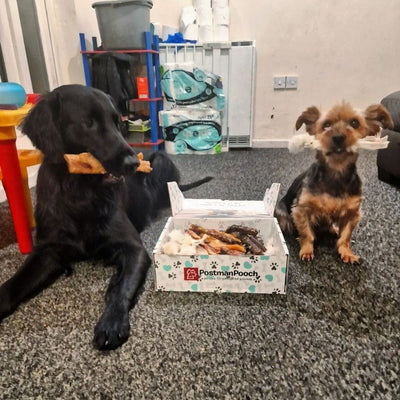Mouthing and nipping are natural behaviours in puppies but can seem like a scary challenge for their humans! The good news is we’re here to help you understand why puppies nip and how their mums and littermates teach them to control it. Knowing this can set you quickly on the road to stopping your fluffy puppy becoming the canine equivalent of Jaws!
Postman Pooch’s Puppy Nipping Good News!
Not having hands, puppies use their mouths to explore the world. Num, num, what’s this? Something to eat? No! Something to play with? Yes! The trouble is, their razor-sharp teeth are painful. The GOOD NEWS is they arrive partly trained by the best trainer possible – mum! Too much pressure during feeding and “YELP!” mum moves away, end of milk-time. To avoid going hungry puppy is gentler next time. Same with his littermates. Too much pressure during play and “YELP!” his litter mates back off, end of play-time. To avoid being lonely biting will be softer when play starts again. This feedback teaches a puppy how to control his bite strength. The posh term for it is ‘bite inhibition’. You just have to build on this great start by taking a cue from puppy’s mum and his litter-mates – be nice and nice things happen!
Before Starting Not to Nip Training
Playing with your puppy helps to build bonds between you. But like her litter mates, you must teach a puppy to play gently. Puppies are covered with fur. We’re not. The same level of bite pressure that is OK during puppy play can hurt us and even break the skin!
Be careful not to teach a puppy that hands are toys. Avoid waving your hands in front of her face or handling her in an excited way to encourage play. It can encourage her to bite! Make it easier for your puppy to learn good manners by using a toy to play with your puppy.
Be prepared! Have toys on ropes spread around the house so that you can offer them to your pup when she starts to nip. Use old tea towels as tuggers as they are long enough for the puppy to chew on one end while you hold the other. Always have a supply of treats handy – perhaps in a bum-bag (or fanny pack for our American friends) so that good behaviour can be instantly recognised and rewarded.
Children and Nipping
Small children get excited around puppies. Their sharp, jerky movements and waving hands can encourage nipping. Give them toys attached to a string so that puppy has something to chase and play with that isn’t human skin!
A Word about Breeds-the Wolf Within
Even the cutest puppy has a wolf ancestor! No matter how cute she looks, your puppy will be an expert at one or more of these wolf traits (behaviours):
Tracking Watching Chasing Catching Killing Eating
Over the centuries humans have bred dogs to help them with different tasks, breeding only from dogs with the traits needed for each task. TERRIERS were bred to help get rid of vermin so the ‘catch and kill’ traits were needed. HERDERS were bred from dogs that were good at the ‘chase’. RETRIEVERS were bred from dogs who were good at ‘Watching and Chasing’.
This matters when thinking about mouthing and nipping. Why? HERDERS can be ankle biters as this is part of the behaviour needed to herd animals. TERRIERS don’t respond well to you YELPING to stop them nipping. This is because their killer instinct is strong and rats and mice will squeal if they are being killed! So your yelps might just make a terrier more excited. RETRIEVERS will tend to be mouthy because – not having hands – they’re bred to carry prey in their mouths. Understanding which wolf traits your fluffy puppy has an instinct for will help you deal with the nipping.
Postman Pooch’ Top Tips to Stop Nipping
Puppies nip us in play to get interaction. Shouting “No!” and jerking your hand back just looks like play to your puppy. The message you want to give is, “When you nip me, I will STOP interacting with you.”
Teach and Reward the Right Behaviour
Wrap a treat in your hand. No matter how hard your dog tries to get it, don’t let him. The minute he moves his nose away from your hand, reward him with the treat. He needs to know that the right behaviour is rewarded.
Try a sharp yelp
Some puppies will stop when they hear that sound as that’s how their litter-mates taught them to control their bite strength. However, humans find it hard to mimic puppy shrieks so it often doesn’t work. TERRIERS can just get more excited and bite harder. If a puppy doesn’t stop and drawback or gets excited by the yelp, follow the step below instead.
Stop playing immediately
This is the other thing puppy litter-mates do to stop hard biting. Calmly move your hands out of reach, fold your arms and look away. When a puppy has settled, slowly offer one hand to her mouth and if she doesn’t bite continue playing. If you get another nip to move away from your puppy and return when she is settled. Puppy learns that hard nipping makes you boring. Most puppies want to keep you engaged so quickly learn to be careful with their teeth.
Redirection
Show your puppy what it IS OK to do.
Have chewy toys to hand and, when you think a nibble is imminent, get that chewy toy in her mouth double quick!
Use non-contact play like fetch or tug-of-war. But to keep things safe for you and puppy, teach your puppy the “drop” command so that you can always remove something from her mouth without an aggressive response. Also, be careful when playing tug-of-war as puppies’ jaws are not fully developed and can be dislocated.
Playtime with vaccinated adult dogs will help socialise her and adult dogs will assist in the process of teaching your puppy when her bite is too hard.
Ankle Biting
This can be a problem in dogs bred to herd! Instantly stop moving your feet. The moment a puppy stops, praise and reward with a treat or toy (keep a favourite toy and treats with you at all times). Repeat these steps until your puppy gets used to watching you move around without ankle nipping. The idea is to teach your dog that good things happen when bad behaviour stops. If you have a persistent ankle nipper, play with your puppy on a lead attached to something she can’t move. When she nips, move out of her reach, wait for her to settle and then return and resume play. For safety reasons, don’t leave the room when a puppy is attached to a lead!
Biting during petting or grooming
Regularly touch your puppy’s ears, face, tail, etc. followed by a small tasty treat. This will help your puppy get used to being touched without mouthing.
Deterrents
Spray yourself and your clothing with a taste deterrent before play. If she mouths you or your clothing, stop moving and wait for her to react to the bad taste. Reward her when she lets go.
Final Words
Above all, make sure anyone and everyone who plays with your puppy practices these techniques and never punish a puppy for nipping. It’s natural behaviour for him. At best punishing puppy could make him afraid of you, and at worst it can cause real aggression. Take a cue from puppy’s mum and littermates. When puppy behaves, good things happen. When puppy misbehaves, good things stop and life just gets boring!

